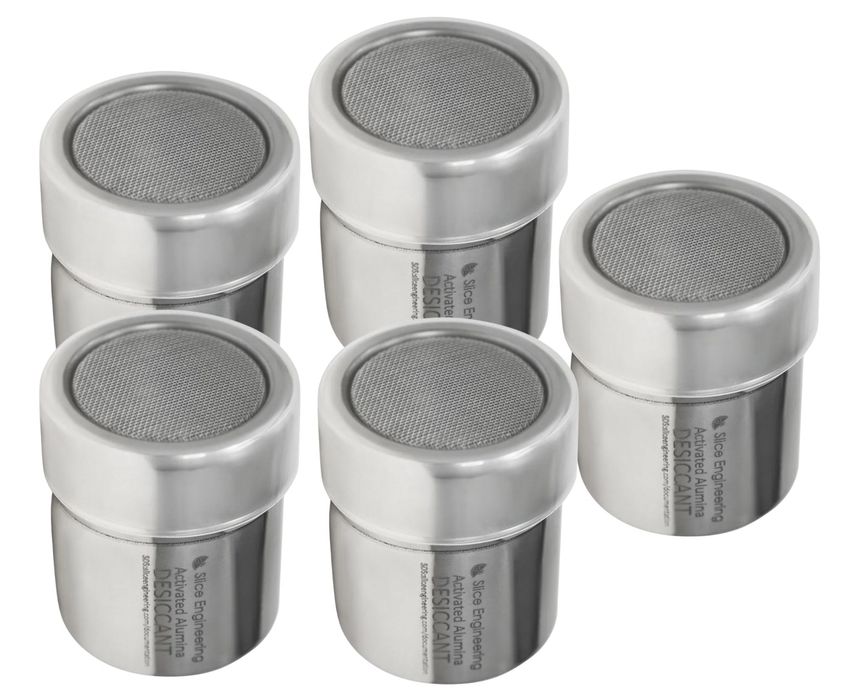
Slice Engineering has introduced a very interesting new way to keep filament dry.
Drying filament is always a good idea. If the material in a filament happens to absorb humidity from the air, it can badly corrupt subsequent 3D prints.
This is because the absorbed humidity actually boils when it passes through the hot end of the 3D printer. This is not surprising, as the 200C+ temperatures of hot ends are vastly above the boiling point of water. The resulting water vapor ends up as bubbles in the extrusion.
If you’ve got a bad case of wet filament, you can actually hear the bubbles popping as they emerge from the FFF 3D printer’s nozzle. The remaining bubbles inside the extrusion make for lousy surface quality, blobbing and can corrupt transparency.
The solution is to keep filaments dry, and there are plenty of ways to do so on the market. Many producers of advanced 3D printers have begun to incorporate “dry boxes” into their equipment, or provide them as add-on accessories. These are basically essential for use of advanced engineering materials, particularly those for high temperature extrusions.
However, many desktop 3D printer operators don’t have budgets for fancy dry boxes, and instead rely on the old standard method: zip-lock bagging a spool of filament with a sachet of desiccant.
This approach mostly works for me, although I live in a rather dry environment. For others in more wet and humid regions, more powerful solutions are required. That usually means more desiccant sachets.
Now Slice Engineering has a more powerful solution that could fit well for many 3D printer operators. They call it “Filament Drying Desiccant”.
This is a special cartridge that is designed to fit into the hub of filament spools, rather than being loose like a sachet. Inside the cartridge is a different kind of desiccant material.
Normally desiccant sachets hold silica gel, but here Slice Engineering uses “activated alumina desiccant”. They say this substance is 10X more powerful than silica gel — and is entirely non toxic.
Slice Engineering said the material is powerful enough to not only absorb surface water, but the relative humidity gradient is so strong it can pull moisture already absorbed into filaments.
The best part here is the price: Slice Engineering sells one cartridge for US$13, with a five-pack going for US$55, or US$11 each.
For those with severe humidity issues, this product could be one to try.

Silica will do exactly the same. Silica is almost the strongest desicant you can get and reactivate. I use about 50 g of silicagel in a 11 litre bucket. Airtight, 3 spools of 1 kg and even a really bad batch is dry after 1-2 weeks without heating. Pla, petg, pp and even nylon, I never have the bubble blues.